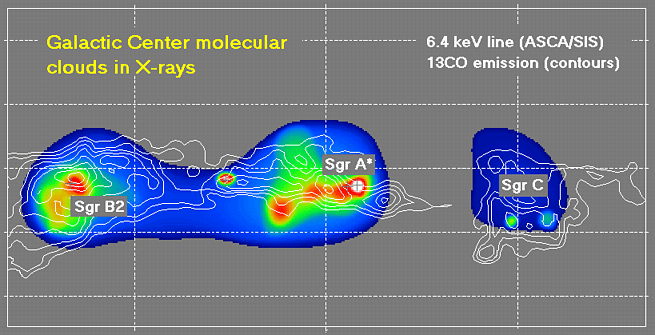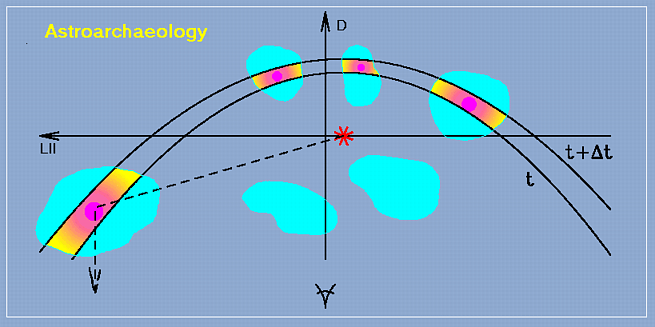Neutral iron Kalpha diagnostic -- X-ray archaeology |

One of the potentially interesting possibilities is the "X-ray
archaeology" based on observations of Kalpha-photons generated by
a flaring compact X-ray source surrounded by neutral matter. If the
light crossing time of the region occupied by neutral matter is long
enough, Kalpha-photons generated by the primary X-ray radiation may
be observable long after the fading of the compact source. This is very
similar to the usual echo, but in the X-ray band. The Kalpha from the
central region of our own Galaxy may be due to
this kind of X-ray echo, produced by an outburst of X-ray
radiation of the supermassive black hole (known as Sgr A* object)
lurking in the gas and dust at the dynamic center of the Galaxy.

In the case of a short flare of the Sgr A* emission (e.g. few hundred years ago) one can expect that molecular clouds, which are exposed to primary radiation at a given moment of time, are located along the surface of the parabola with the focus at Sgr A*. The geometry of the parabola reflects the time delay associated with the propagation of primary hard X-ray photons from Sgr A* to the neutral matter and further propagation of the Kalpha- photons to the observer. Clouds located not at the surface of this parabola will not produce Kalpha-emission at the given moment of time. The whole picture will not be static: the geometry of the parabola will change in time and some molecular clouds may fade, while others will become brighter in the Kalpha-line. It is therefore an exciting application for imaging X-ray telescopes to detect changes of the Kalpha- morphology in the central region of our Galaxy on time scales of years or tens of years.
E. Churazov, M. Gilfanov, R. Sunyaev
Further reading:
| MPA-Home | Current Research |